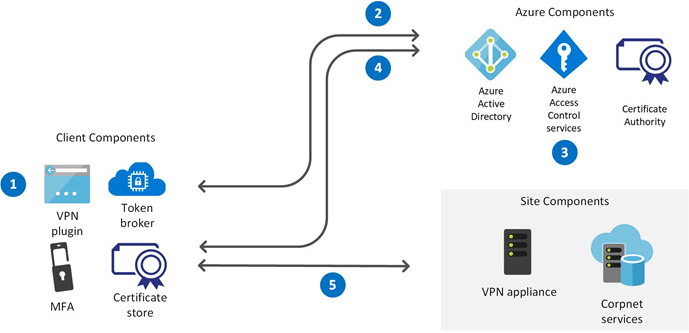


Didn't know that 'A-O VPN' was a thing. It's always been broken down as 'client-server' or 'site to site / branch office' VPN.I've used both, and it works great! I personally like the 'site to site' version better because it's hardware-defined. You tell the boxes to talk to each other, and who can talk to who, and you're done. Two separate networks combined, and they never go down, barring connection or power issues. Mine have been really reliable for years.Even Client-Server.
You establish the connection and tell it not to disconnect after a certain amount of time or lack of activity. Though this is through software so can be a bit more arbitrary. Also is under the end-user's control, so you run into more issues with people needing to connect because they don't understand what they're doing. Dittos for Site-to-Site VPN.
Windows Always On Vpn Group Policy
It's 'always on' and the configuration/management effort is focused onto 2 devices (usually routers) instead of J. Random Laptop or PC or BYOD-what-have-you.If it's business-use-only, avoid the 'split horizon' kludges & just route everything from the remote sites through your main site - providing you can afford to provision enough bandwidth to your main site. Is your friend, split DNS will cost you hair.Many decent routers have a 'Client-to-Site' VPN client you can download which is designed for their equipment, so the odd roaming user can also connect. Microsoft's product is mainly configuring a Windows Server as VPN endpoint, which you would connect to with a software client. Same as using a router/firewall/UTM box that supports VPN, you would just route the traffic through directly to the server. I suppose you might be able to configure two servers for site-to-site, but that would increase complexity for similar functionality.The scale of my deployment is small.
In this article. Always On VPN, however, has mitigated most of those limitations or expanded the VPN functionality beyond the capabilities of DirectAccess. Always On VPN addresses the previous gaps between Windows VPNs and DirectAccess; therefore, Always On VPN is the DirectAccess replacement solution.
The sites only have up to ten users, and my main office only forty. Only a fraction of those 'use' the VPNs at all, let alone at the same time. If you have the bandwidth, and the edge device can support it, it would work reliably up to a very large scale. I don't have VPN 'servers'. The clients and sites connect to each other at the subnet level. So if you connected from home, that gets you access to the network, just like you were in the office.
Of course, that would be slow, especially with my limited bandwidth, so the users use Microsoft Remote Desktop to access their desktop computers, or a Terminal Server I have set up. That way, those computers do the work locally, and little internet bandwidth is needed.It would help to know a little more information about what you are trying to do. Are these users mobile, or at home? Do they work in two separate offices? Always On VPN is a good alternative for DirectAccess, which was Microsoft's answer to VPN software before. Keep in mind that Always On VPN is only compatible with Windows 10 devices.
If all 1,000 of your devices are set up with Windows 10, then Always On may be a good option for you! Here's a full feature list and overview:Richard Hicks (one of our NetMotion partners) also has a great breakdown of the benefits and limitations of using Always On VPN:We also have a great VPN alternative to both Always ON and DirectAccess, which is Since you weren't asking specifically about NetMotion, I won't clog up the discussion with too many details, but Mobility is a VPN built on a unique architecture that is SSO from device power-up and maintains always-on access to business-critical applications when wireless signals are weak or non-existent. You can download a if you want to give it a try and compare it Always On VPN. But don't be afraid to reach out to me if you have any questions!
Hey,So I configured Windows 10 to use a VPN that operates through (I didn't download a client, I manually added it through Settings Network & Internet VPN Add a VPN connection) and added the information it told me to put in, such as the name, login, server address, format and encryption, etc. The VPN itself works perfectly, but the problem is that Windows seems to randomly disconnect it, meaning that I have to manually go to the VPN menu and reconnect. Is there a way to make it so that it connects automatically every time?
Do a search for task scheduler. Create a new task, name it whatever you like. ( vpn auto reconnect etc.)Run even when user not logged on, run with higher privilegesTrigger tab, application 1st box, rasclient 2nd box, and 3rd box is 20226.
